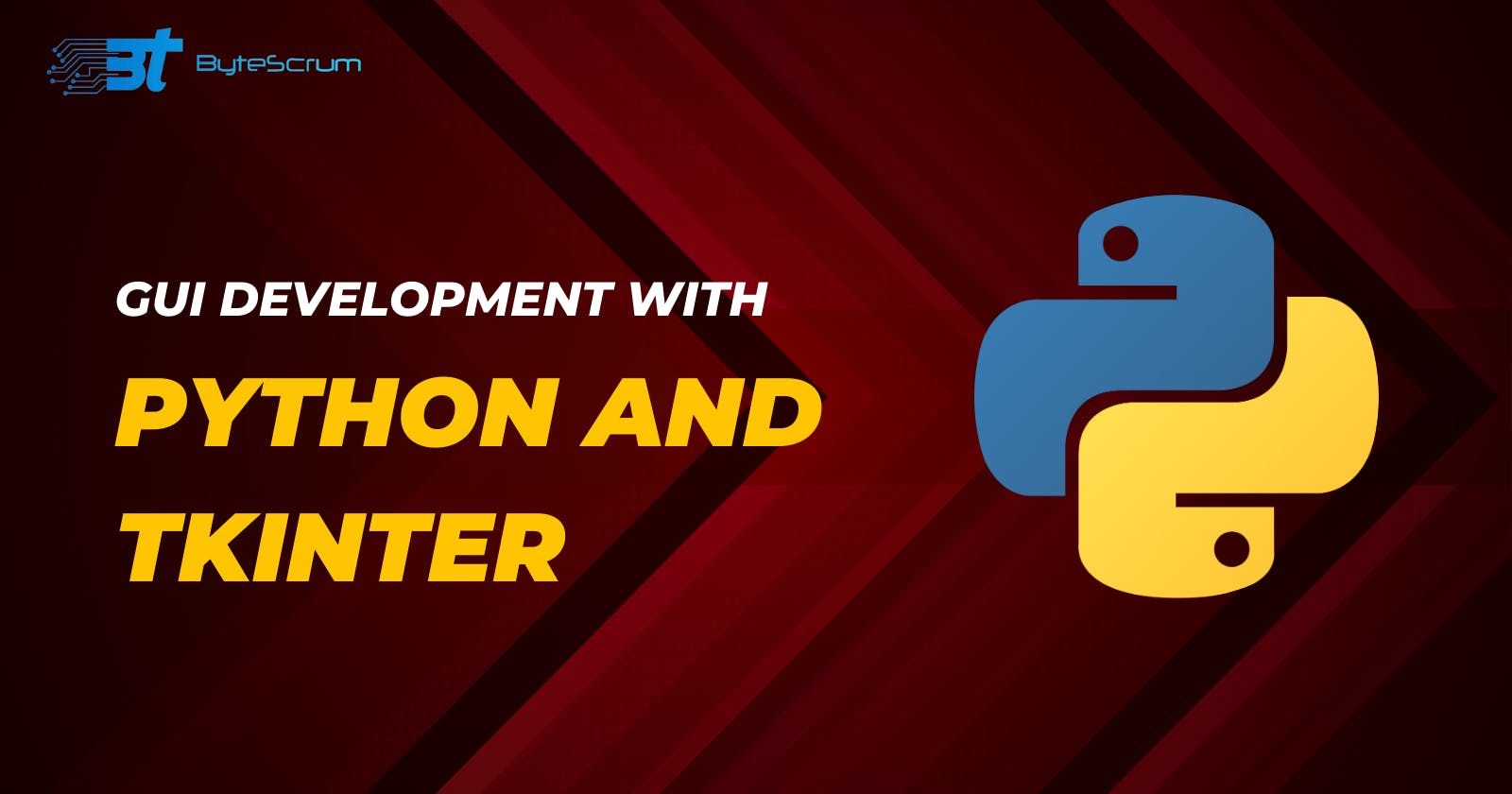Mastering GUI Development with Python and Tkinter
Building Dynamic and User-Friendly Applications
Table of contents
Introduction
Graphical User Interfaces (GUIs) are an integral part of modern software applications, allowing users to interact with programs in a visual and intuitive way. Python, with its simplicity and versatility, is an excellent choice for GUI development. Tkinter, Python's built-in GUI library, provides a robust set of tools for creating desktop applications. In this comprehensive guide, we'll explore how to leverage Python and Tkinter to build dynamic and user-friendly GUIs.
The Root Window
The root window is the main window of a Tkinter application. It serves as the container for all other widgets. You can customize the root window's title, size, and appearance:
import tkinter as tk
root = tk.Tk()
root.title("Tkinter App")
root.geometry("400x300")
root.mainloop()
Fonts and Colors
Tkinter allows you to customize fonts and colors to enhance the appearance of your GUI. You can specify fonts and colors for widgets such as labels and buttons:
label = tk.Label(root, text="Hello, Tkinter!", font=("Helvetica", 24), fg="blue")
Working with Containers: Canvas and Frame
Containers like Canvas and Frame allow you to organize widgets within your GUI. The Canvas widget is used for drawing graphics, while the Frame widget is used for grouping widgets:
canvas = tk.Canvas(root, width=200, height=200)
frame = tk.Frame(root)
Widgets: Buttons, Labels, Messages, and More
Tkinter provides a wide range of widgets to create interactive GUIs. Let's explore some of the commonly used widgets and how to use them:
Button Widget
The Button widget is used to add buttons to your GUI. Buttons can have text or images and can be configured to perform a specific action when clicked:
button = tk.Button(root, text="Click Me", command=on_button_click)
button.pack()
Label Widget
The Label widget is used to display text or images. Labels can be configured with fonts, colors, and other properties:
label = tk.Label(root, text="Hi, Tkinter!", font=("Arial", 16), fg="green")
label.pack()
Message Widget
The Message widget is used to display multi-line text messages. It automatically wraps text to fit within the widget's width:
message = tk.Message(root, text="This is a multi-line message.")
message.pack()
Text Widget
The Text widget is used to display and edit multi-line text. It supports features like text selection, copying, and pasting:
text = tk.Text(root, height=5, width=30)
text.pack()
Scrollbar Widget
The Scrollbar widget is used to add scrollbars to widgets that support scrolling, such as the Text widget:
scrollbar = tk.Scrollbar(root, orient="vertical", command=text.yview)
scrollbar.pack(side="right", fill="y")
text.config(yscrollcommand=scrollbar.set)
Checkbutton Widget
The Checkbutton widget is used to create checkboxes. It can be toggled on or off:
checkbutton = tk.Checkbutton(root, text="Check me")
checkbutton.pack()
Radiobutton Widget
The Radiobutton widget is used to create radio buttons. Radio buttons are grouped together, and only one can be selected at a time:
radio_button1 = tk.Radiobutton(root, text="Option 1", value=1)
radio_button2 = tk.Radiobutton(root, text="Option 2", value=2)
radio_button1.pack()
radio_button2.pack()
Entry Widget
The Entry widget is used to create single-line text entry fields. It allows users to input text:
entry = tk.Entry(root)
entry.pack()
Spinbox Widget
The Spinbox widget is used to create a spin box for selecting values from a predefined range:
spinbox = tk.Spinbox(root, from_=0, to=10)
spinbox.pack()
Listbox Widget
The Listbox widget is used to display a list of items. Users can select one or more items from the list:
listbox = tk.Listbox(root)
listbox.insert(1, "Item 1")
listbox.insert(2, "Item 2")
listbox.pack()
Menu Widget
The Menu widget is used to create menus in your GUI. Menus can contain items that perform various actions:
menu = tk.Menu(root)
root.config(menu=menu)
file_menu = tk.Menu(menu)
menu.add_cascade(label="File", menu=file_menu)
file_menu.add_command(label="Open", command=open_file)
file_menu.add_command(label="Save", command=save_file)
Creating Tables
Tkinter does not have a built-in table widget, but you can create tables using the Treeview widget from the tkinter.ttk module. The Treeview widget allows you to display tabular data with columns and rows:
import tkinter.ttk as ttk
tree = ttk.Treeview(root, columns=("Name", "Age"))
tree.heading("#0", text="ID")
tree.heading("Name", text="Name")
tree.heading("Age", text="Age")
tree.pack()

